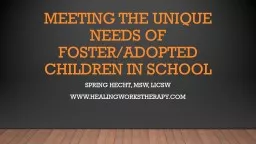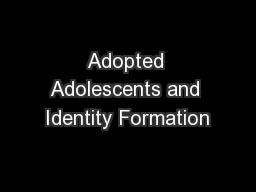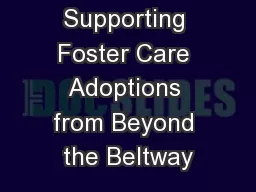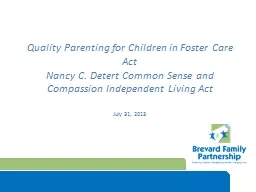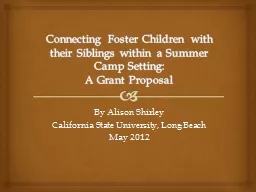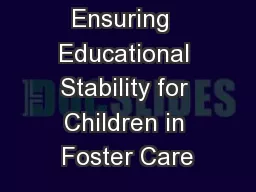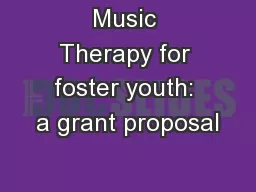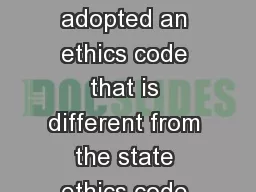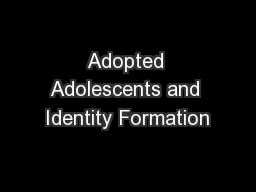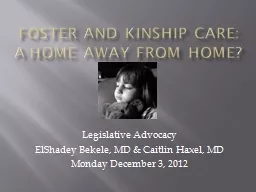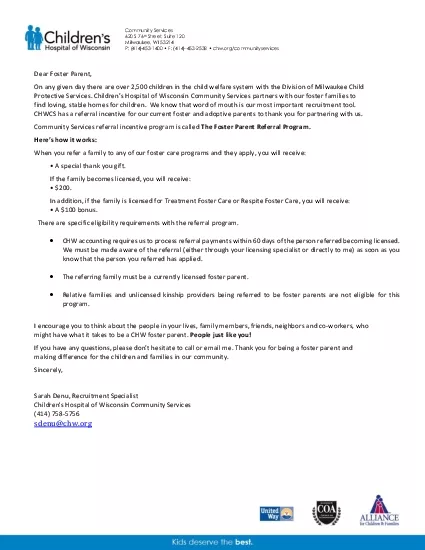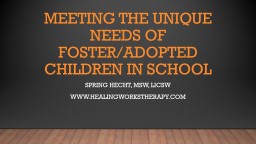PPT-Meeting the unique needs of foster/adopted children in scho
Author : phoebe-click | Published Date : 2017-07-11
Spring Hecht msw licsw wwwhealingworkstherapycom My story Adopted person from South Korea placed at 6 months Raised and loved by a white family in Seattle with
Presentation Embed Code
Download Presentation
Download Presentation The PPT/PDF document "Meeting the unique needs of foster/adopt..." is the property of its rightful owner. Permission is granted to download and print the materials on this website for personal, non-commercial use only, and to display it on your personal computer provided you do not modify the materials and that you retain all copyright notices contained in the materials. By downloading content from our website, you accept the terms of this agreement.
Meeting the unique needs of foster/adopted children in scho: Transcript
Download Rules Of Document
"Meeting the unique needs of foster/adopted children in scho"The content belongs to its owner. You may download and print it for personal use, without modification, and keep all copyright notices. By downloading, you agree to these terms.
Related Documents

